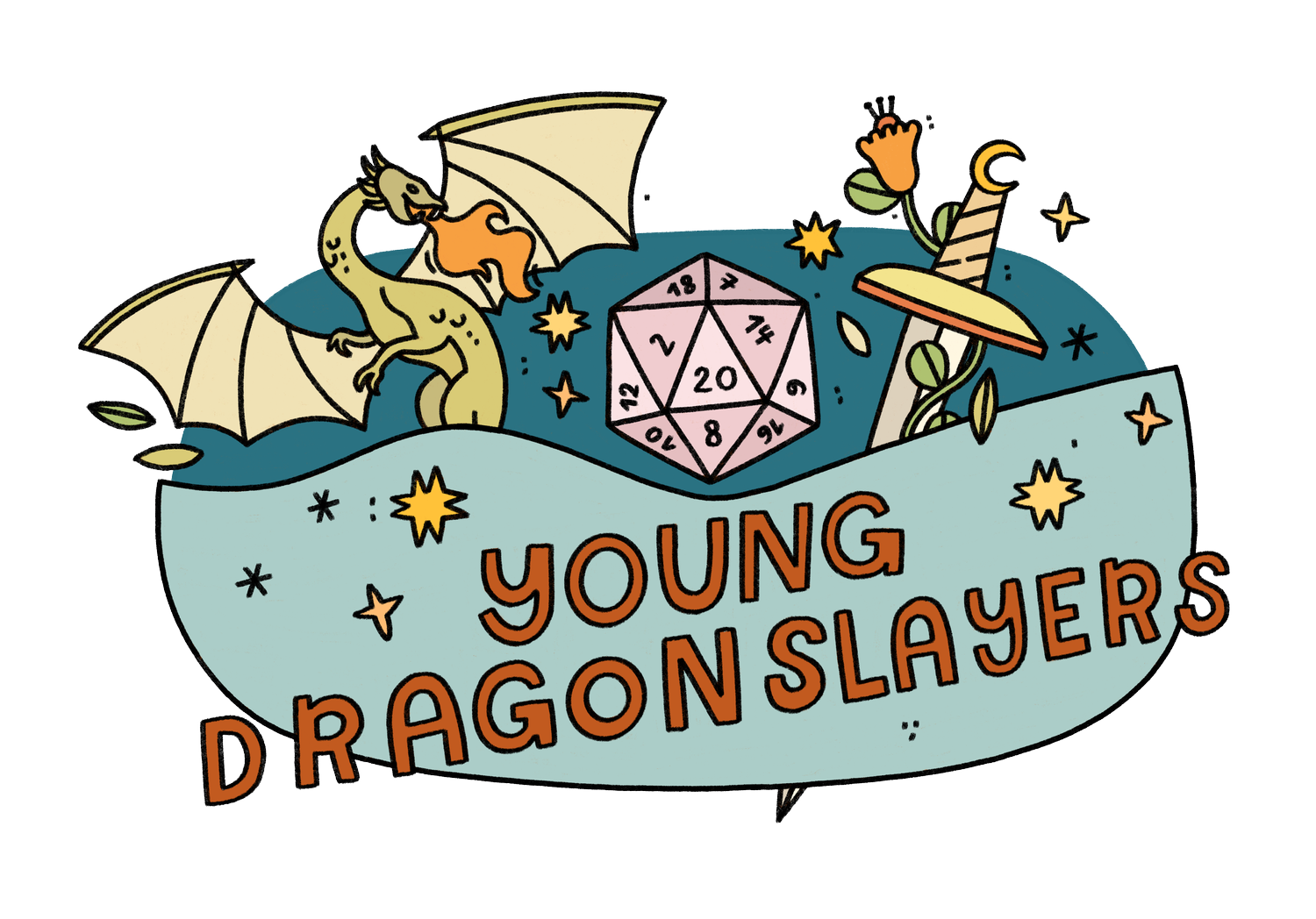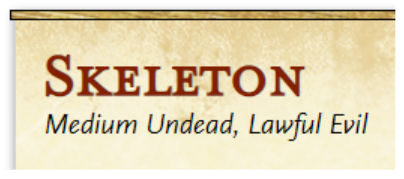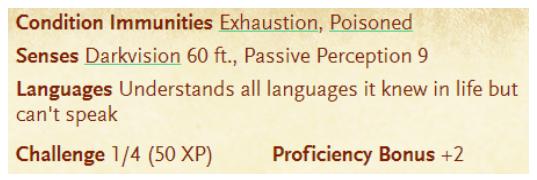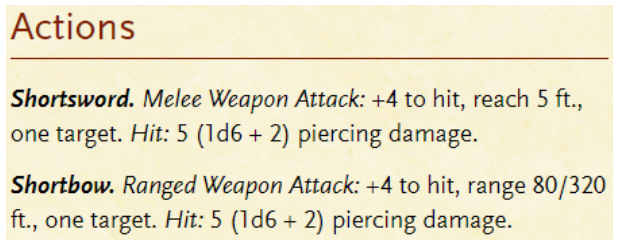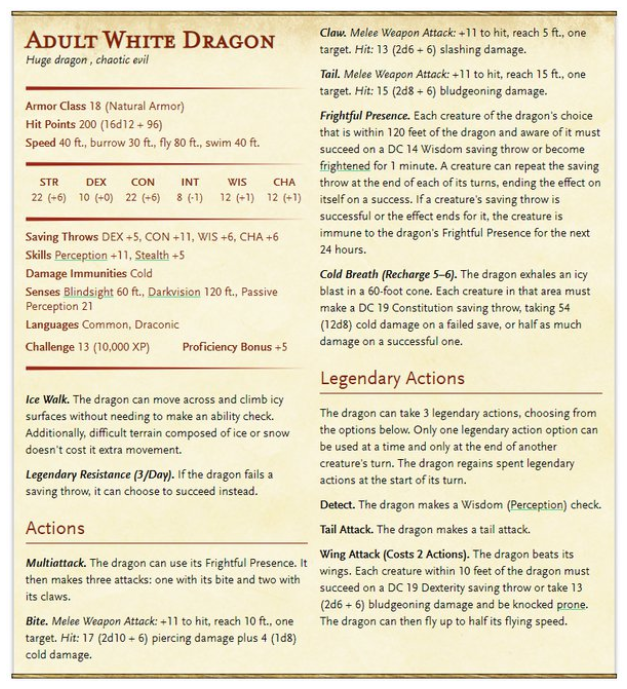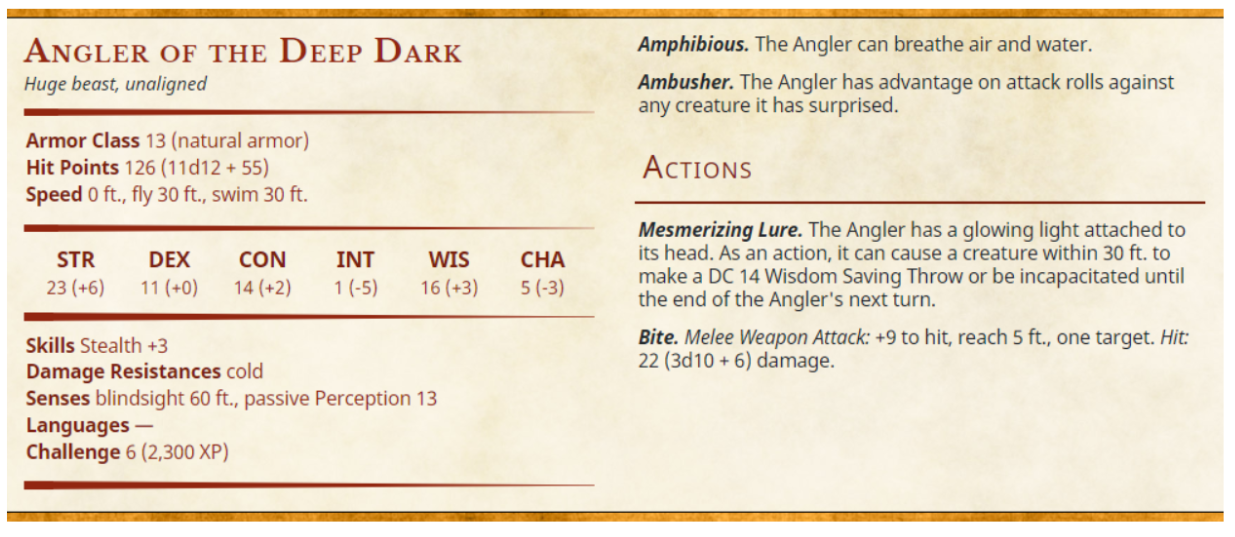A Complete Guide to D&D Monsters (And How to Make Your Own)
One of the greatest aspects of Dungeons & Dragons, 5th Edition is all the creative, exciting, and terrifying monsters. How do people come up with all these creatures, and how do they work?
It’s time to pull back the curtain that your sneaky DM hides behind and uncover the secrets of how monsters work in Dungeons & Dragons. As a bonus, you’ll even learn how to create your own custom monster!
How to Read Monster Stats in D&D
Ready for an insight check? Let’s see how well you know your enemy by taking a peek inside the Monster Manual. Each monster has a card containing basically everything you need to know about them. We’ll begin with a simple example: the Skeleton. Have a quick gander at this glorious bony humanoid:
Some monsters have a lot more to them, but we’ll get to those later. For now, let’s try to understand what each part means.
Starting in the top left: each monster has a name and short description. In D&D, skeletons are medium undead beings that are Lawful Evil. Here’s all the information you can learn from this tiny blurb:
Medium creatures are around the same size as a human in real life – between 4 and 8 feet tall. Not super big, but not that small either.
Undead monsters were once alive and have been risen from the dead by necromantic magic.
Lawful Evil creatures follow a set of rules that leads them to do evil things. Skeletons must be evil because necromancy said so!
Make sense so far? These details are more focused on describing the character, so they won’t matter much in combat. Look just below the name, though, and you’ll find some stuff that definitely will matter in combat:
Armor Class (AC) is the number a player has to roll to hit an enemy. You can see that next to the armor class, the card says he is wearing armor scraps. That makes his armor class a 13. Not hard to hit.
Hit Points (HP) are how much health a monster has. It can be a set number or you can roll for it. Skeletons either have 13 HP or 2d8 + 4 HP. Knock a monster down to 0 HP, and you’ve defeated it! Most of the time, at least.
Speed is how far a monster can move in one turn of combat. Most monsters (and players) have a basic speed of 30 ft. per turn. Some may have a swimming, climbing, or flying speed, which allows them to move around in different ways.
What Abilities Do Monsters Have in D&D?
Now some stats. These ability scores should look familiar because they’re the exact same for a player character. If you need a refresher on how these work, check out our previous article on ability scores. These numbers will be useful if the skeleton tries to roll an ability check. That’s right, monsters can roll ability checks too!
Underneath the stat block are a few important attack types to look out for:
Damage vulnerabilities are attack types that will do double damage to a creature. Try bonking this skeleton over the head with a club to do bludgeoning damage. It’s super effective!
Damage immunities are attack types that do nothing to a creature. Good luck trying to poison a skeleton with no digestive system.
Skeletons have no damage resistances, which are attack types that do half as much damage to a creature.
Pro Tip: when fighting a monster, ask your DM this question: Does it look like my attack did more or less damage than I’d expect?
Your DM may hint at whether or not the damage type you did was a resistance, vulnerability, or immunity of the monster you’re fighting. Finding these out can be extremely helpful in defeating the toughest monsters.
So, What Makes a Monster Special?
Moving on to the right side of the monster card: we have a few more stats left to read:
Condition immunities are status effects that will not affect a creature. There are many different conditions that can be applied to monsters or players, such as stunned, paralyzed, blinded, or unconscious. Skeletons cannot be poisoned and cannot become exhausted. Lucky them.
Senses are ways a monster can see, hear, or sense you. Some monsters are completely blind but can feel where you are. Others may be able to see you coming from a mile away. Skeletons can see in the dark for 60 ft. You might also notice something called Passive Perception. This tells you how naturally observant an enemy is. You could probably sneak by a skeleton pretty easily.
Languages are how a monster communicates. Some can speak many languages, others may only speak one. Some psychic monsters can hear your thoughts. Be careful with those ones.
Challenge is a number between 0 and 30 that shows how difficult a monster is. It is sometimes referred to as “challenge rating”. DM’s use websites or books to figure out how challenging a fight needs to be.* Fights can be easy, medium, hard, or deadly. If you want to be a good DM, give your players a mixture of fight difficulties. Easy fights can get boring quickly. Hard challenges are the most fun – and they give you the best loot.
*Some DM’s use XP instead of challenge rating.
A monster’s Proficiency Bonus is just like a player’s. If a monster does something that uses a skill they are proficient in, they get to add a number to whatever they roll. Aw, man… skeletons aren’t proficient in anything.
How Do Monsters Attack in D&D?
Last but not least, let’s look at the action block. These are the most EPIC abilities a monster can have. Let’s check out what the skeleton has!
…Wow, that’s it? No wonder they have a challenge rating of ¼.
This skeleton has two possible attacks: a melee shortsword attack and a ranged shortbow attack. Both have an attack roll bonus of +4 and do 1d6 + 2 piercing damage. A lot of monsters can attack multiple times in one turn, so be on the lookout!
In each turn of combat, characters and monsters get an action, bonus action, movement, and reaction. You can do these things in any order in a single round of combat (around 6 seconds).
Movement is how far you can go based on your speed, which we went over earlier.
Bonus actions are quick things like open a door, drink a potion, or shout key information to a fellow player.
Actions are the main thing you can do in one round of combat. Swing your sword, use an item, cast a spell, or move even further. If you don’t know what to do, you can hold your action until something else happens after your turn, making it into a reaction.
Reactions are ways you can respond to something else happening. These happen when it’s not your turn. For example, you can try and attack an enemy as they run away from you, or you can use your held action to do something at just the right moment.
Some of the most challenging monsters also get lair actions or legendary actions. These are cool ways that monsters can move and battle when it’s not their turn. They basically ensure that important battles with powerful foes are as awesome as they can be.
Lair actions are things that happen to the environment at a set initiative roll. Maybe rocks are falling from the ceiling, or a door is slowly closing. These aren’t technically things that the monster does, but they are included because they’re part of where the monster lives.
Legendary actions: if you hear your DM say these two words, it’s gonna be a tough battle! At the end of a player’s turn, an enemy can make something happen. It might make an attack, move around, cast a spell, or cause an effect to happen.
Ready to Read a Monster’s Stats? Let’s Test Your Knowledge.
Now that we’ve covered pretty much all there is to know about how to read a monster’s stats, let’s put ourselves to the test. Here is another monster card to check out. See how much of it you can understand:
Yikes! You do not want to encounter one of these. Strong and tough, with mighty abilities that could put some serious hurt on your adventuring party.
So, how much of that did you understand? Maybe being a DM is not that bad after all. In fact, maybe it’s time to make your own monster from scratch…
The Homebrew Guide: How to Create a Custom Monster in D&D
Can you create your own custom monsters for your D&D campaign? Yes, absolutely!
Creating original things and putting them into a D&D game is called “Homebrew”. Just like when creating a character, homebrew monsters start with an inspired idea. Think of animals, people, or even places that you like. Take something that seems completely harmless and brainstorm how to make it into something epically terrifying. Or, think of two creatures that already exist and combine them!
First, find something that makes your jaw drop. What do you want your monster to look like, where should it live, and what should it be able to do? Coming up with just a few ideas will jump start your creation so that the following steps will be easy. Now you have an inspired idea that can go anywhere you choose!
I want to homebrew a floating fish monstrosity that lives in magical darkness, luring in prey with a small light. Kind of like an anglerfish, but way creepier.
Next, consider how difficult you want your monster to be. How much HP should it have, what should its AC be? Is it large, small, tiny, gargantuan? Does it wear armor or is it made out of marshmallow fluff? You may need to consider how difficult you want it to be for your players. Sometimes it’s helpful to compare your monster to something that already exists in order to get a sense of how strong it should be.
Hmm… D&D already has a Giant Shark enemy, which is kind of similar to what I want. I’ll use its HP and stats, but will come up with my own abilities.
Finally, using other monsters as a guideline, come up with your own abilities and numbers. Will your enemy use weapons, spells, or natural abilities? There are lots of ways to go about it. Let your imagination run wild! Just remember: if you want your party to fight this monster, make sure it’s challenging, but not overpowered. As you build your Homebrew monster, you might change it more and more until eventually, it’s completely original.
Okay, I’ve made my own monster! Here’s its card:
I’ve Created a Monster… Quite Literally!
So, there you have it. A complete guide on how monsters work, your first lesson on how to homebrew in Dungeons and Dragons, and a brand new monster to take home with you!
If you want to jump into battle with cool enemies like these, perhaps we can help! Here at Young Dragonslayers™, we offer kid-friendly online games that feature Homebrew content tailored to our players’ interests. This means that you and your fellow players will work together with your Dungeon Master to figure out what kind of world you’ll explore, and what enemies you’ll fight.
We open enrollment for our games every few months. We pre-screen all players in advance to ensure the games stay safe, and do our very best to match kids up who we think will get along. Does this sound like your cup of tea? You can fill out an application for our waitlist by clicking the link or the button below. We hope to see you soon!
